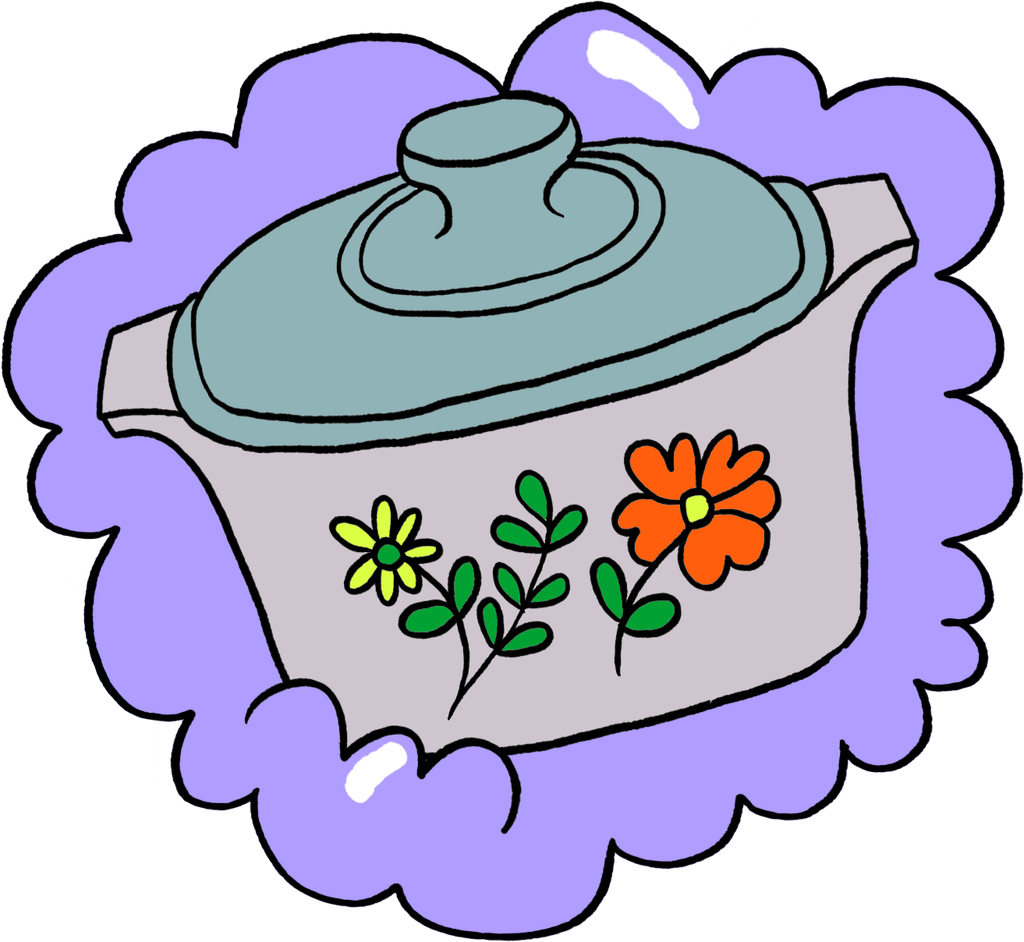The plates are lovely: They’re ceramic and adorned with rough, blue brushstrokes and dotted with yellow stars. But it isn’t their aesthetic appeal that I like so much, it’s what they mean. They were our Hanukkah plates when I was young; my mother passed them off to me when I moved into my first adult apartment. Now, years and several homes later, I can’t stop buying them, even though my husband wishes I would.

I don’t remember feeling especially connected to the plates when I first began using them as an adult, but when my original set began to chip last year, I found that I was devastated. That’s when I started scouting them out and buying them from eBay. And even though I have a full, unchipped set — plus a few chipped ones for everyday use — I still want more, as “extras.”
Adria Saracino, the founder of the food and travel blog The Emerald Palate, doesn’t have the same problem. Although she’s an avid vintage shopper, her main interest is in antique furniture. Still, she often finds herself scanning stores’ selections of plates, bowls, or jars, looking for a particular pattern. It’s a blue floral, printed against a flat off-white background, a pattern that was part of the Pfaltzgraff Yorktowne collection in the 1960s. “My mother had the dinner plates, dessert plates, and this huge punch bowl she always kept on top of the fridge to use as her junk drawer,” she says. “I don’t specifically seek them out, but every time I see them in a vintage store I smile and, if my mother is with me, I point them out.”
Her mother still uses her Pfaltzgraff Yorktowne kitchenware, and Saracino expects the pieces to be passed down to her one day, so she doesn’t buy the pattern when she sees it. But she associates it with warmth. “It reminds me of all those family meals growing up, when our extended family would cram around the dining room table for Christmas dinner. Hands would be dashing across the table fighting for sides, with the plates waiting underneath to be filled. As you cleared your plate, the design would slowly reveal itself as the one constant among constantly changing recipes at festivities,” Saracino remembers.
The kitchen item that tugs at Rowena Murakami’s heartstrings was simple: a basic white enamel mug with a dark blue rim. “When I was young, my grandfather and I would go on long walks. We would start at 5 a.m. to catch the sunrise, either on the mangroves near our place or on the rice paddies in the next town. He will always bring a small picnic for us, with his small coffee flask and those enamel mugs,” she recalls. “I am reminded of my grandpa when I see those mugs, but the ones I see now have other designs.” However, she says, “I will definitely buy it if I find the basic ones.”

For other people it’s a certain type of casserole dish, like the once-popular Corning Wildflower pattern, or a plastic cup that seemingly every child in the country drank out of, or a set of coloured Pyrex bowls that were always pulled out when a cake was being baked. Some people don’t even remember what plates their parents or grandparents used until they randomly see them again and are instantly transported back into their childhood kitchen.
Of course, anything can set off an episode of nostalgia. But kitchenware does seem to hold a special power over our minds and souls. “As nostalgia can be triggered by both taste and smell, it makes sense that items related to food such as specific patterned plates would be used as triggers for nostalgia also,” says Bettina Zengel, PhD, a lecturer at the University of Essex, who’s studied the emotion.
Nostalgia is an inherently bittersweet emotion, she notes, but typically a positive one. And people may have been more pulled toward the past over the last year. “You can think of feelings of nostalgia as a source of strength that can help people face the challenges of the present and orient themselves towards the future,” Dr. Zengel says. “That might sound a bit paradoxical at first glance, but we have found that when people feel nostalgic, they tend to also feel more positive towards themselves, more connected with others but also more optimistic and inspired.”
Studies have shown that nostalgia can counteract the existential crisis that tends to set in alongside boredom, including the type you may feel when — just to throw out a hypothetical here — you’re stuck inside your home for months on end, and have limited contact with others, little variation in your daily routine, and no sense of when you’ll be allowed back to your normal life. You know, that kind of boredom. As the authors of a 2018 paper in the journal Review of General Psychology put it: “Nostalgia helps people find meaning in their lives, and it does so primarily by increasing social connectedness (a sense of belongingness and acceptance), and secondarily by augmenting self-continuity (a sense of connection between one’s past and one’s present).”

There’s something special about shared nostalgia as well. When we find out that we weren’t the only kid to drink juice out of repurposed jam jars or that all of our dads used that same faux-wood-panelled, scarily loud alarm clock or that our friend currently uses the exact same wood-handled utensils we ate with for the first 12 years of our lives, it feels like a mini-miracle worth rejoicing over. “Each of us has our own life history that has contributed to our becoming the special person we are. But we need to feel the common bond that prevents loneliness and alienation,” Krystine I. Batcho, PhD, a licensed psychologist who developed the Nostalgia Inventory, a survey that assesses how prone one is to nostalgia, told Well + Good. “Sharing nostalgic memories about trends during our childhood or youth brings back both the happiness we felt then and the feelings of social connectedness we enjoyed during a simpler, more innocent period in life.”
The pleasure of nostalgia, though, is contingent on its pain. “It’s connected to events in our past that are particularly meaningful and that we long for in the present. However, those events are irrevocably in the past,” Dr. Zengel explains. “You might think of a Christmas celebration or maybe Thanksgiving in the circle of your family when you were young. You could try to recreate the situation in the present. But people have changed, some might have passed away, so it would not be the same even if you tried.” There’s an element of yearning that adds depth to the happy memory, like a spoonful of espresso powder stirred into a flourless chocolate cake.

Collecting items from our pasts can help stir up that achingly warm feeling. But Dr. Zengel does say that seeking out nostalgia-inducing items can become a problem, “if people become too obsessed with capturing these relics of the good old times.” My inability to unsave my eBay search for the blue star plates despite already owning a surplus may speak to my personality type — or to the fact that I have some anxiety over letting go of certain aspects of my childhood. Or maybe collecting them has become, as Joseph Rykwert wrote in his article “Why Collect?” for History Today, “a weapon against that sense of our passing which the great Tudor poet, William Dunbar, enshrined in the refrain Timor mortis conturbat me (`the fear of death makes me tremble’).”
And of course, while owning an item from the past can be especially comforting, just speaking to people about a shared memory, looking at pictures of old plate patterns, or perusing the kitchenware section of vintage shops without buying can bring the same sense of cosy familiarity. The memory is what’s important, and that’s already been formed. As Dr. Zengel said, “it would not be the same, even if you tried.”
Like what you see? How about some more R29 goodness, right here?
Did Your Parents Have This Alarm Clock, Too?